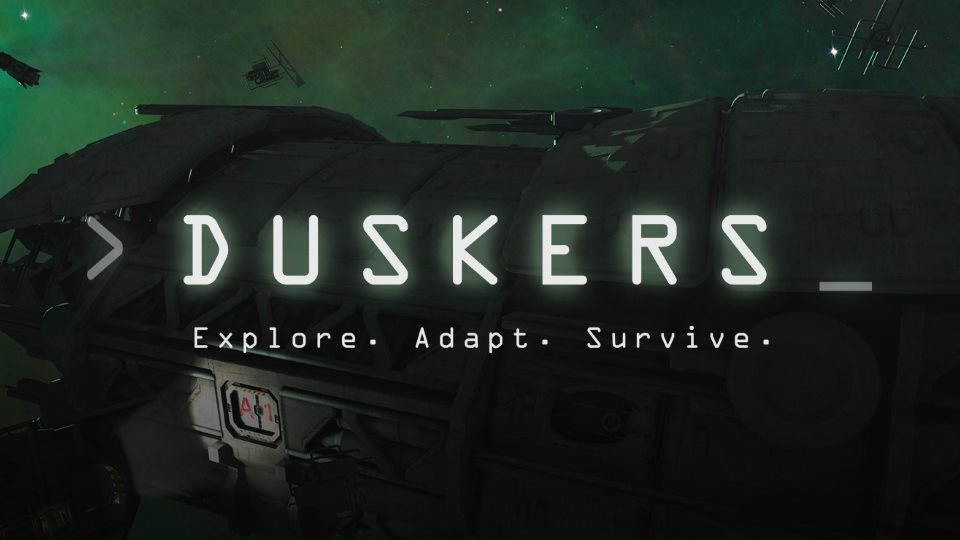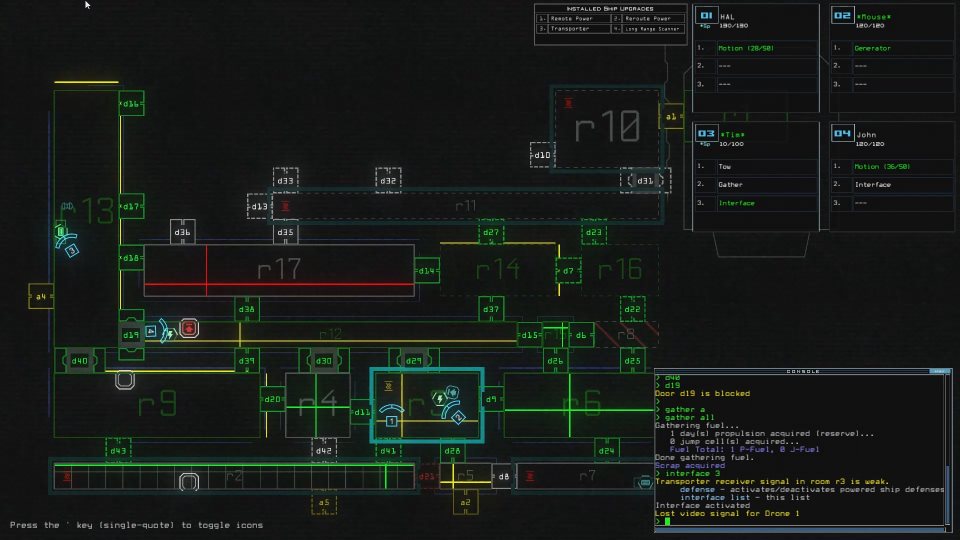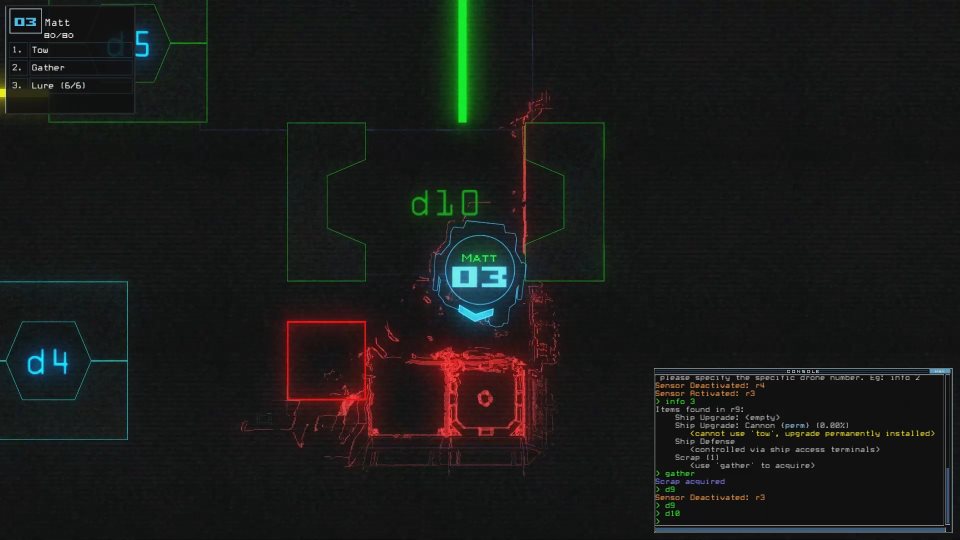

It's the far future. You're an investigator, sending a small team of robotic drones to derelict spaceships, which have suffered some form of apocalyptic death. As you travel, you'll need to collect resources, such as fuel to allow you to keep moving, and scrap to let you repair each robot as well as upgrade them. These upgrades improve the functionality of each machine, with only those with the relevant equipment being able to do necessary tasks like "gather", "interface" or "tow".
But you're not on the ship with the robots. Instead you are in a command vessel somewhere else. And you can only see what's going on in two ways. You can look through the eyes of a particular robot as you drive it round (with WASD controls). This is useful because it lets you find the different things you need to pick up, but it also means you have a very limited view. You don't know what else is going on.
The other way of observing is an overview, with each robot you control represented by a little icon, along with the same for generators, doors, rooms and the things you need to pick up. This is the more strategic view of ordering about your robots, because the simple driving them around is very limiting. The other way you actually control them is through a command line style structure. Simple commands like "generator" will let a robot with the relevant upgrade power the ships you land on, whereas careful use of a semi-colon will let you drive them around multiple rooms performing several actions.

So the main aim is collecting fuel so that you can keep investigating, but the more important challenge is that the ships are infested with different enemies that can easily disable or destroy your robots. These threats are detected one of two ways. The first is the simplest, but also least helpful.
That's accidentally walking into them when exploring a ship, and typically dying immediately.

The second is the use of a motion detector, which allows you to work out what's in the rooms around you. Each room will be coded red, green or yellow. Green rooms are safe, red rooms contain death and yellow rooms can't be scanned. This means you need to try and manipulate possible threats from rooms you can't scan to rooms you can. It's a slow, thoughtful process, that requires careful planning and a decent memory to track which rooms you've checked and which are possibly unsafe. The fact that you do all this through a typed command line adds an unexpected amount of fun to it, bringing back memories of the text adventures I spent a lot of my childhood playing.

Aliens and killer robots aren't the only threats though. Space itself is dangerous. Accidentally open a ship you're on to the cold vacuum of space, and it'll start sucking all your drones out into it. Hell, sometimes space is actively trying to kill you. Asteroids can smash rooms open and take out an entire team very quickly. (See the gif. I nearly cried.)
Very easy to restart with a new team though, and generous enough that you don't need to reset the entire universe if you muck it up. I can see this stealing a lot of my time.





Tagged: Game Roguelike Topdown Average difficulty PC